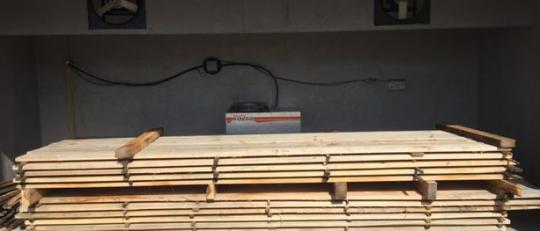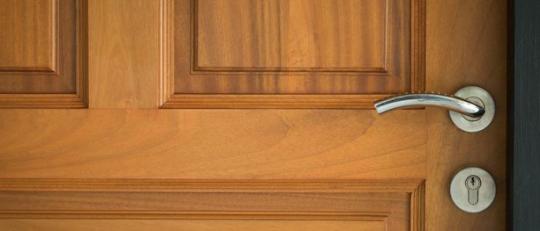If you want to make your own lumber, it’s important to know how to dry it properly. You can do this using different methods like air drying, kilns and ovens. Each method has its advantages and disadvantages. If you are only making small batches of lumber, then a small wood drying kiln is perfect for you.
We bet you’ve stumbled upon this article because you don’t have any in-depth knowledge about it. Luckily, you’re landing on the right webpage. Let’s explore it by continuing reading the article below.

What is a small wood drying kiln?
Basically, a small wood drying kiln is a portable version of a specialized equipment used for drying freshly-harvested lumber. It’s prettily similar to the ones you used for drying clothes
There are several different types of small drying kilns, but they all have the same purpose. Among all choices, the solar kiln is the most economical choice and has several advantages over air drying.
There are several advantages to using a kiln for wood drying:
• A kiln can dry lumber faster than air drying. This means that you’ll save money and energy on your utility bills every month because you won’t need to heat up your shop so often or for as long.
• A small wood drying kiln will dry lumber more evenly, which means less warping or cupping once it’s been dried out completely.
•This type of kiln offers consistent results every time because it doesn’t depend on outside factors like weather conditions.
How do you build a small wood drying kiln?
In this guide, we will discuss how to build a small wood drying kiln from scratch, as well as how to use it effectively.
Exhaust Fan Capable of Providing 800 ft3/min of Air Flow
The exhaust fan must be capable of providing the correct amount of air flow, and it must also be able to do so in the correct direction. Airflow is measured by CFM (cubic feet per minute). You can buy an exhaust fan with a CFM rating that’s low enough to dry your lumber.
But if you have too small a CFM rating, your lumber won’t dry properly because not enough oxygen will be available in the kiln chamber for complete combustion and drying out.
Heat Source
The first thing you need to know about building a wood kiln is that the heat source must be safe. You can use propane, natural gas or electricity as your energy source – it’s up to you which one you choose.
The most important thing is that there is enough heat available for drying your wood. If you want to dry 1/8″ thick pieces of lumber in 24 hours, then obviously gas or electricity will work better than burning wood in an open fire pit!

Build a Box
The box should be made of wood, with dimensions that are at least 1 foot by 2 feet by 4 feet. You can make it any size you want, but for this project the dimensions are ideal.
The inside of the box should have an insulated wall on one side and not insulated walls on the other three sides (this will make more sense later). This insulating layer should be made from foam boards or another type of insulation that will form a seal between your heating element and your kiln chamber’s walls.
The top and bottom boards must be sturdy enough to withstand heat transfer when they come into contact with each other as well as being able to hold up under pressure over time without any problems with warping or cracking in their structure—even though there won’t actually be much weight inside your kiln once it’s finished!
Temperature Regulator
You need to be able to control the temperature inside your kiln. Wood drying is a process in which wood is dried out until it reaches equilibrium at its water content, or moisture content. This moisture content can vary depending on what type of wood you’re drying and how much time you want it to take.
For example, if you’re drying softwood lumber like cedar shingles, they have an ideal moisture content of around 20%. On the other hand, hardwoods like oak will only reach about 10% moisture before they become too brittle for use as lumber.
You’ll need to be able to adjust your kiln’s temperature so that your piece of lumber will dry out evenly throughout its entire length and width so that there are no cracks in it later on when you use it for building projects such as furniture or houses! Here’s an article that will guide you on picking the best temperature regulator for your kiln.
Humidity Controller
You will need to control the humidity in the kiln. You can use a dehumidifier powered by electricity or propane gas, or you can use a humidifier powered by electricity or propane gas. A wetting agent works well at lowering the humidity and keeping your kiln dry throughout its operation. A wetting agent should be used in conjunction with some form of cooling system, such as an air conditioner or fan heater.
Difficult, right? In that case, buying is the best option. We have lots available here in our store which are ready for purchase. Feel free to explore!

Can I kiln dry wood at home?
Kiln drying wood at home is possible using a smaller version of the original and ideal size, but it’s not as simple as it sounds.
If you want to try this project, make sure you’re buying a kiln. You can dry wood in a solar kiln or dehumidification kiln, but these aren’t exactly cheap. If you don’t have the money for one of these and don’t mind waiting longer than necessary, then go ahead and use your oven or microwave to dry out your wood.
Once you have the proper equipment, though—and after making sure that all the moisture has been removed from your logs—you’ll be able to start carving with ease!
Safety Precautions
When using a kiln to dry wood, safety precautions are essential. It is imperative that you take the necessary steps to ensure your safety and that of those around you. The following steps should be taken:
• Always wear eye protection and a dust mask
• Keep a fire extinguisher nearby
• Keep a fire blanket nearby as well
• Never leave the kiln unattended during use, as it can overheat quickly and cause serious burns or even fires.
Drying Tips at Home
- Use the right wood: If you’re going to be making a lot of furniture, or if you just want to do it right, it’s important to use the right kind of wood for your project.
- Get a kiln with temperature control: A kiln with an adjustable temperature setting is essential when drying out large pieces of lumber. You’ll need this feature so that you can set a low enough temperature in order for your lumber to dry properly but not so hot that it catches on fire.

Is kiln dried lumber worth it?
You may wonder why most construction project managers opt for kiln dried lumber, and it encourages you to purchase for your home renovations, or even make one. But is it really worth it for a small-scaled project?
Actually, kiln dried lumber is a good choice for the following projects:
- Decks and fences
- Houses, especially those with high-quality framing materials like 2x4s, 2x6s, and 2x8s.
- Sheds
Also, kiln dried lumber costs less than you might think
The cost of drying lumber yourself is not insignificant, especially when you factor in the time it takes to dry. Even if you have a heated garage or shed, the ambient temperature needs to be high enough for weeks on end to make drying lumber worth your while.
The cost of buying kiln dried lumber from a lumberyard can vary depending on how much you buy and where you buy it. However, even at its most expensive, it will still be less than any method of drying your own wood.
Kiln-dried wood is an excellent choice for those who don’t have access to adequate space or equipment for air-drying their own wood.
It also works well for projects that require consistent moisture levels throughout the piece such as furniture construction or making doors where there are no other options available (like conventional kiln-dried materials).

Is kiln dried wood resistant to termites?
When doing the kiln drying process, all insect eggs plus termites living inside the tight pores of wood will be scorched, hence killing them. Basically, the short answer for this is yes.
Kiln dried wood has no moisture content, which means it’s quite resistant to termites. If you’ve ever seen a wooden fence post or deck that’s been treated with wood preservatives and then left outside in the sun for years, you’ve seen how dry they can get.
This is because wood naturally absorbs water from its surrounding environment; as it ages and grows older, it becomes less porous and more difficult for water to penetrate inside of it—good news for anyone looking to build with kiln dried wood!
When termites burrow through wood that has not been kiln dried, they depend on these sources of moisture to survive inside the wood—so when the termite comes across a piece of wood that’s been dried out by heat from an industrial kiln before use (which kills off these insects), there won’t be anything left inside for them to eat!

Key Takeaway
Now you learned more about kiln dried lumber and how it differs from green wood. If you are interested in learning more about the different types of lumber available, check out our blog post here.
Check out also our small wood drying kilns for sale because it might interest you too. We guarantee that it has high quality.

